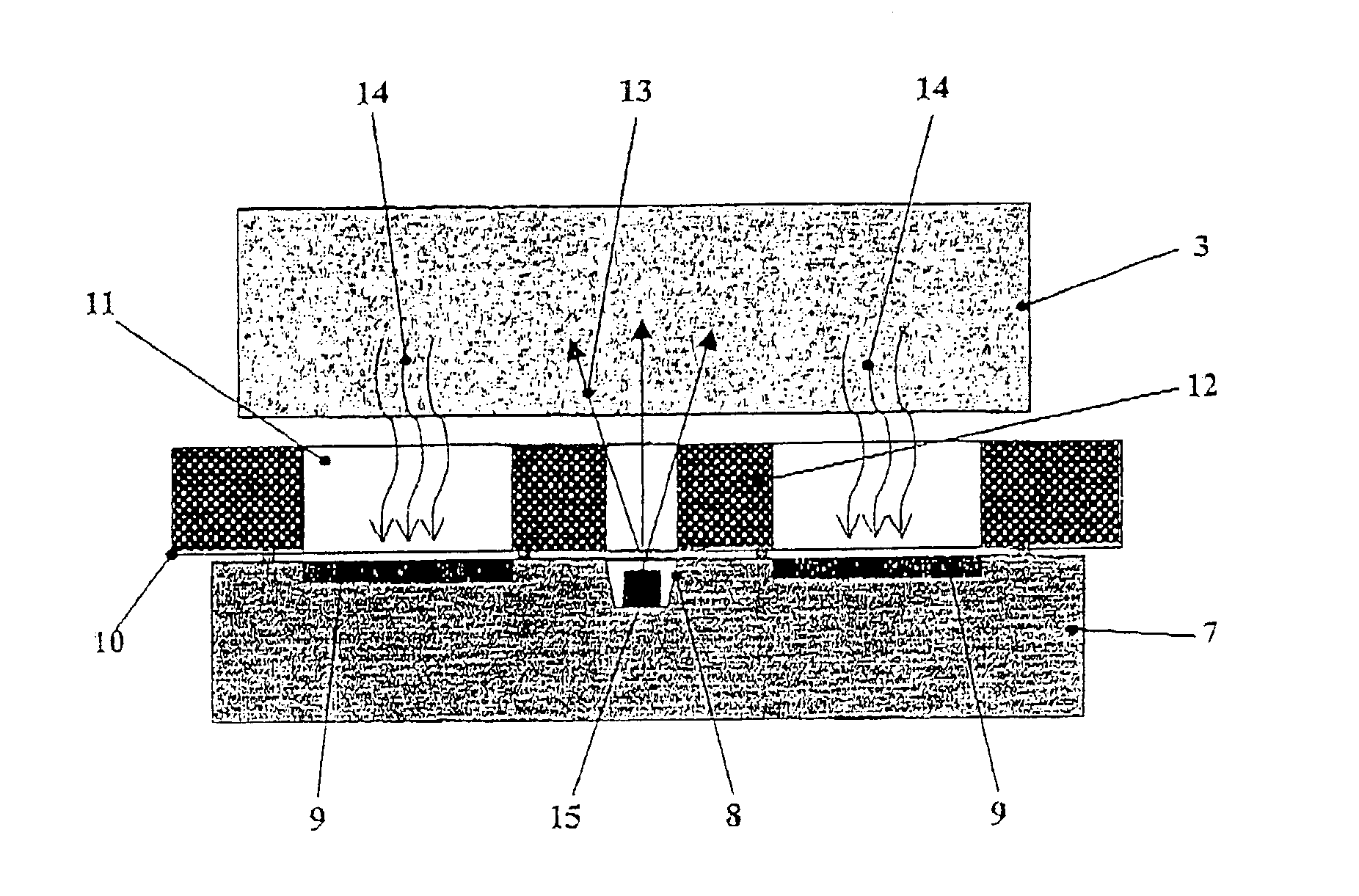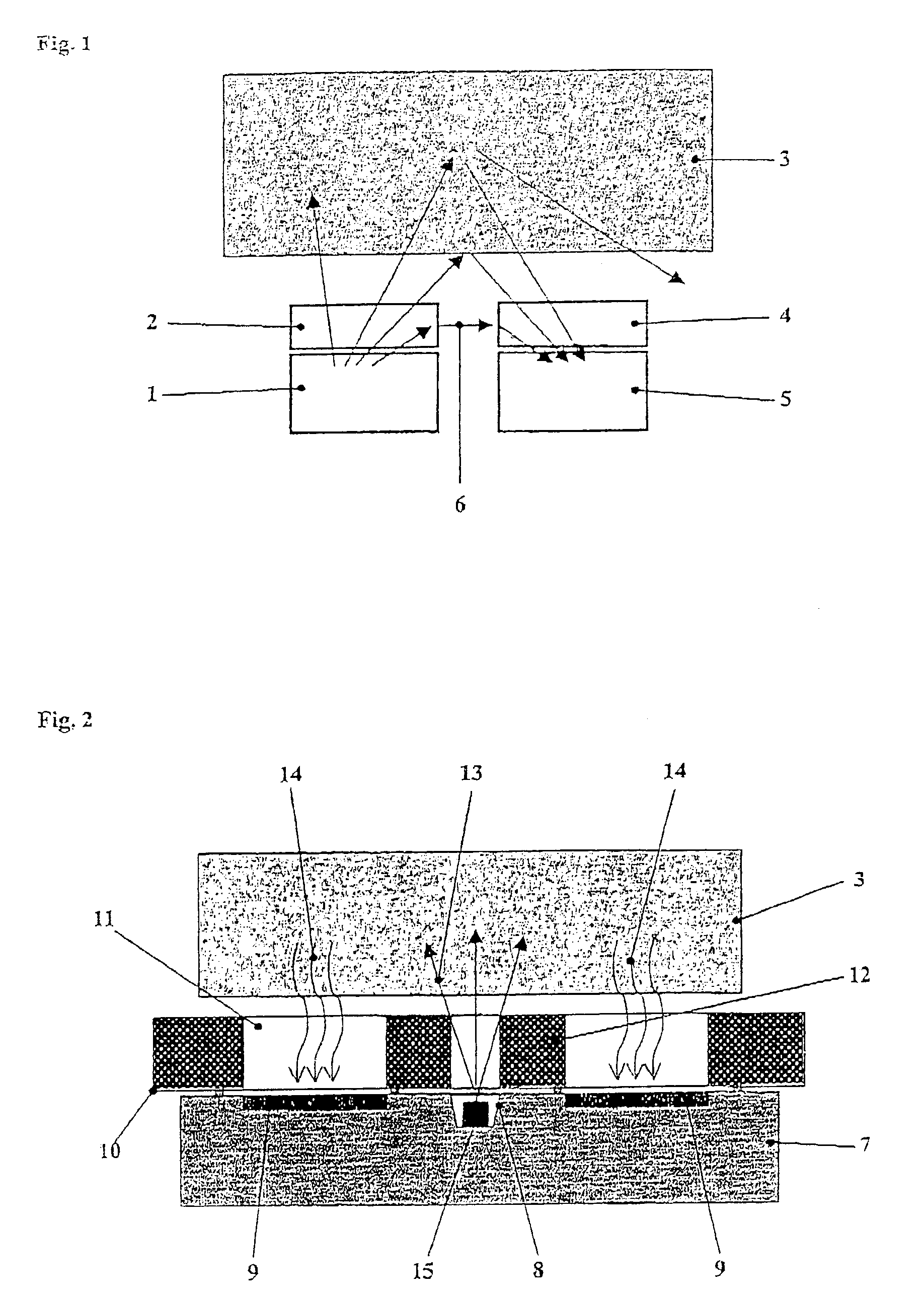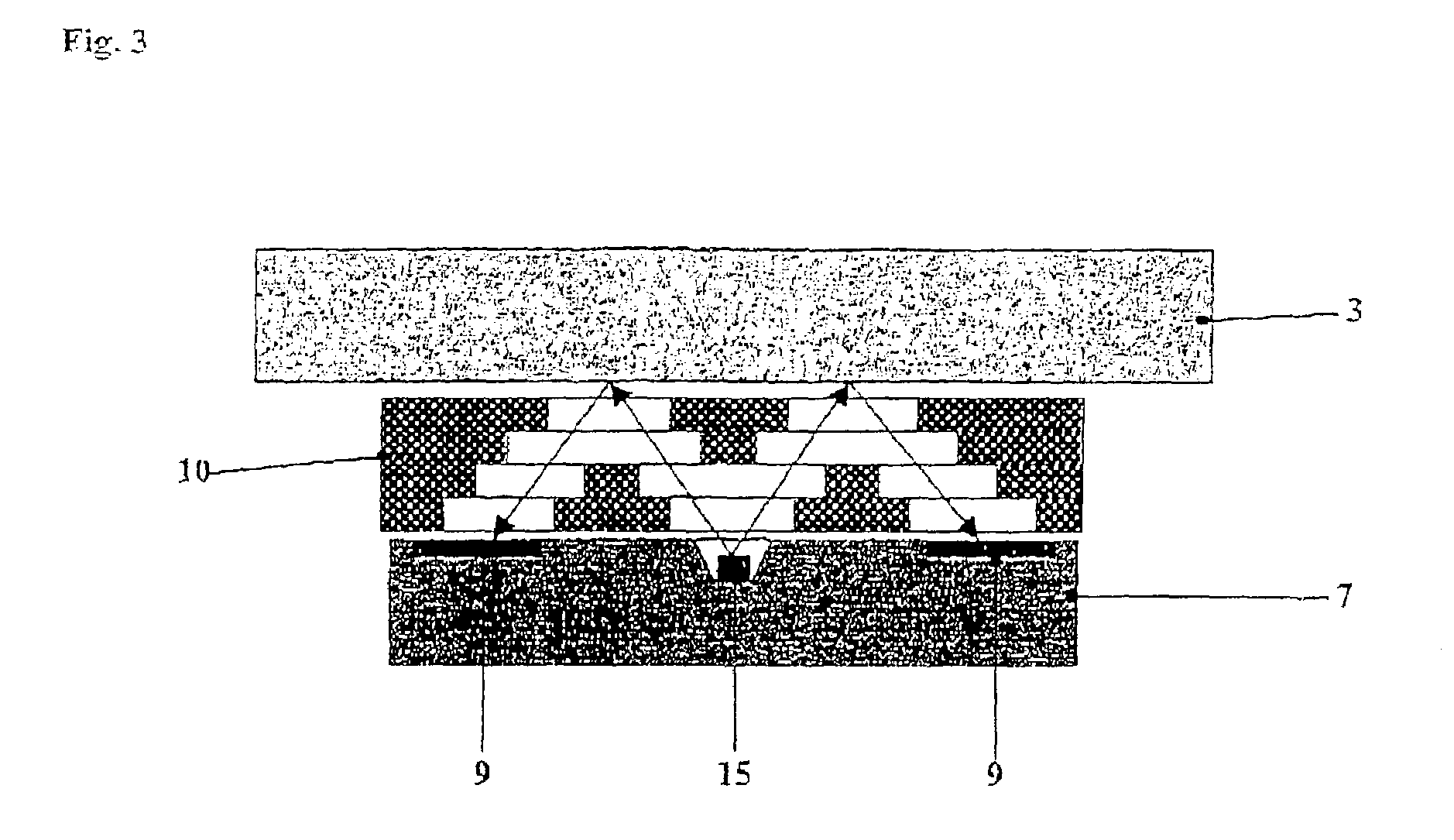Sensor detecting reflected light and method for its manufacture
- Summary
- Abstract
- Description
- Claims
- Application Information
AI Technical Summary
Benefits of technology
Problems solved by technology
Method used
Image
Examples
Embodiment Construction
[0022]Referring now in detail to the drawings, FIG. 1 shows the basic structure of a hybrid sensor for detecting reflected light. The radiation emitted by the light emitter 1 penetrates the transparent protective layer 2 of the emitter, is then reflected on the object 3 being measured, and partly passes through the protective layer 4 of the receiver and to the optical receiver 5. Between transparent protective layers 2 and 4, an undesirable component of the emitted light passes via the coupling path 6 directly from the light emitter to the receiver 5.
[0023]FIG. 2 shows a reflected-light sensor that is integrated in a hybrid manner by a cross-sectional view, where the protective layer of glass 10 has been produced from UV-sensitive glass. Such UV-sensitive types of glass are commercially available and are offered in the market, for example under the trade name FOTURAN® by the firm SCHOTT Glaswerke of Mainz, Germany. UV-sensitive glasses can be changed from the originally transparent ...
PUM
 Login to View More
Login to View More Abstract
Description
Claims
Application Information
 Login to View More
Login to View More - R&D
- Intellectual Property
- Life Sciences
- Materials
- Tech Scout
- Unparalleled Data Quality
- Higher Quality Content
- 60% Fewer Hallucinations
Browse by: Latest US Patents, China's latest patents, Technical Efficacy Thesaurus, Application Domain, Technology Topic, Popular Technical Reports.
© 2025 PatSnap. All rights reserved.Legal|Privacy policy|Modern Slavery Act Transparency Statement|Sitemap|About US| Contact US: help@patsnap.com



